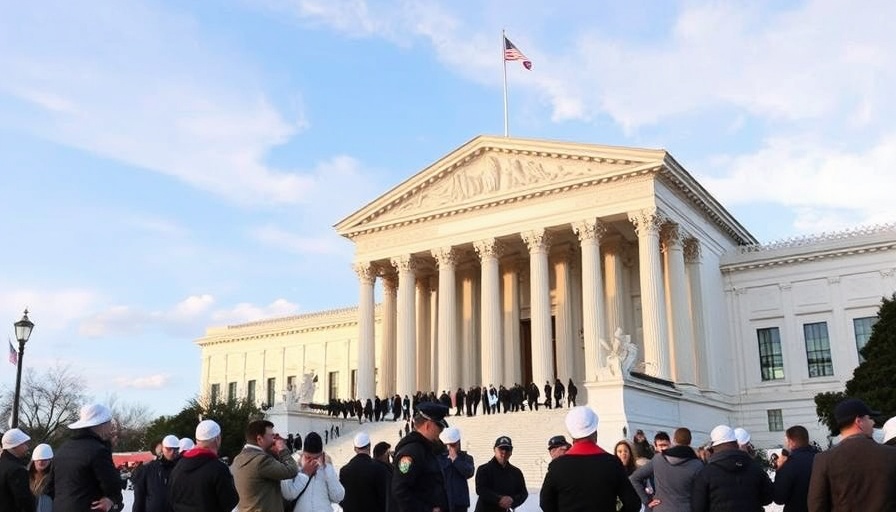
Understanding Recent Legislative Actions Affecting the Federal Workforce
The long-standing debate between presidential authority and congressional oversight has intensified in the wake of a recent federal court ruling that largely affects government employees. The U.S. District Court for the Northern District of California, led by Judge Susan Illston, has implemented a temporary restraining order halting President Trump's executive order that aimed for mass "reductions in force" within multiple federal agencies until May 23. This pivotal ruling has significant implications, especially for labor unions and various organizations that fear the consequences of large layoffs.
The Background of the Executive Order
Issued on February 11, the executive order directed heads of federal agencies to collaborate with the Department of Government Efficiency to prepare for immediate workforce reductions. It notably enforced a hiring limitation, allowing federal agencies to fill just one position for every four that became vacant, except for roles essential for public safety and law enforcement. Critics argue that this unilateral action lacks essential cooperation with Congress, which traditionally oversees federal employment policies.
The Court's Perspective on Employee Rights
Judge Illston highlighted concerns regarding potential job losses, referring to alarming testimonies from labor institutions. For instance, evidence presented claimed that the reductions could devastate departments such as the National Institute for Occupational Safety and Health (NIOSH), threatening their key functions, including important health research for mine workers. This insight emphasizes the critical role of federal jobs not only for economic stability but also for public health safety, indicating a need for a collective legislative approach rather than individual presidential directives.
The Broader Implications for Federal Agencies
With appeals from the Department of Justice underway, this judicial pause has raised questions about the future of employee security in federal roles. The ruling signals that decisions impacting workforce composition should involve congressional debate rather than executive fiat. For business owners and facility managers, especially those in construction and related sectors, these developments are vital—any disruptions in federal operations may have ripple effects, potentially hindering projects that rely on government contracts and regulations.
Why Understanding This Policy Change Matters
For businesses, the implications of this decision go beyond immediate personnel matters—it encapsulates a broader conversation about workforce management and safety at federal levels. Workers and employers alike should remain vigilant about these developments, as policies shaping the government's workforce can influence regulatory actions affecting various industry sectors. Moreover, a stable government workforce ensures that agencies can function effectively, promoting public safety standards crucial in industries profoundly connected to employee health and well-being.
As these legal discussions evolve, staying informed provides business leaders with insights into effective workforce planning and the potential for upcoming legislative shifts that could impact operational dynamics in federal contracts.
 Add Row
Add Row  Add
Add 




 Add Row
Add Row  Add
Add 

Write A Comment